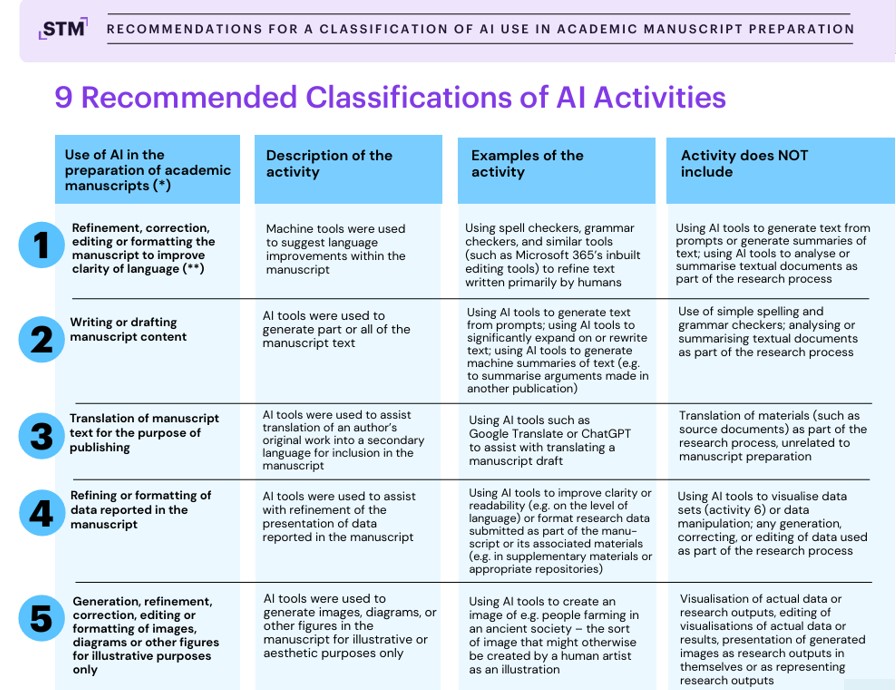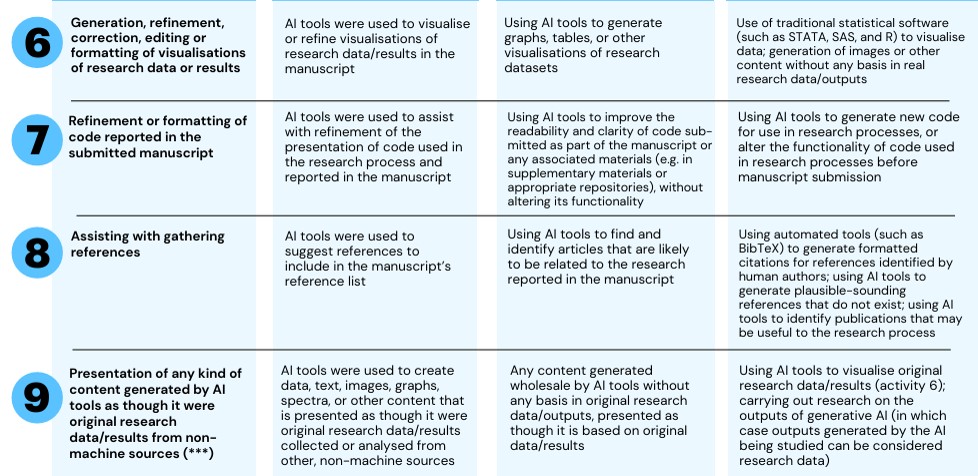Responsible AI practices and ethics
|
Bias Detection and Mitigation
|
|
Validation and Verification
|
|
Transparency and Accountability
|
A case of Irresponsible AI Practices and Unethical Behavior
Classification of AI use in academic manuscript preparation
The International Association of Scientific, Technical & Medical Publishers (STM), an association that represents the world’s leading scholarly publishers and organizations within the scholarly publishing ecosystem, publishes the
"Recommendations for a Classification of AI use in Academic Manuscript Preparation". (September 2025).
Download the full report here.


Acceptable use of AI for authors
| With references to several academic publishers' guidelines, here are the guiding principles: | |
|
|
American Psychological Association |

